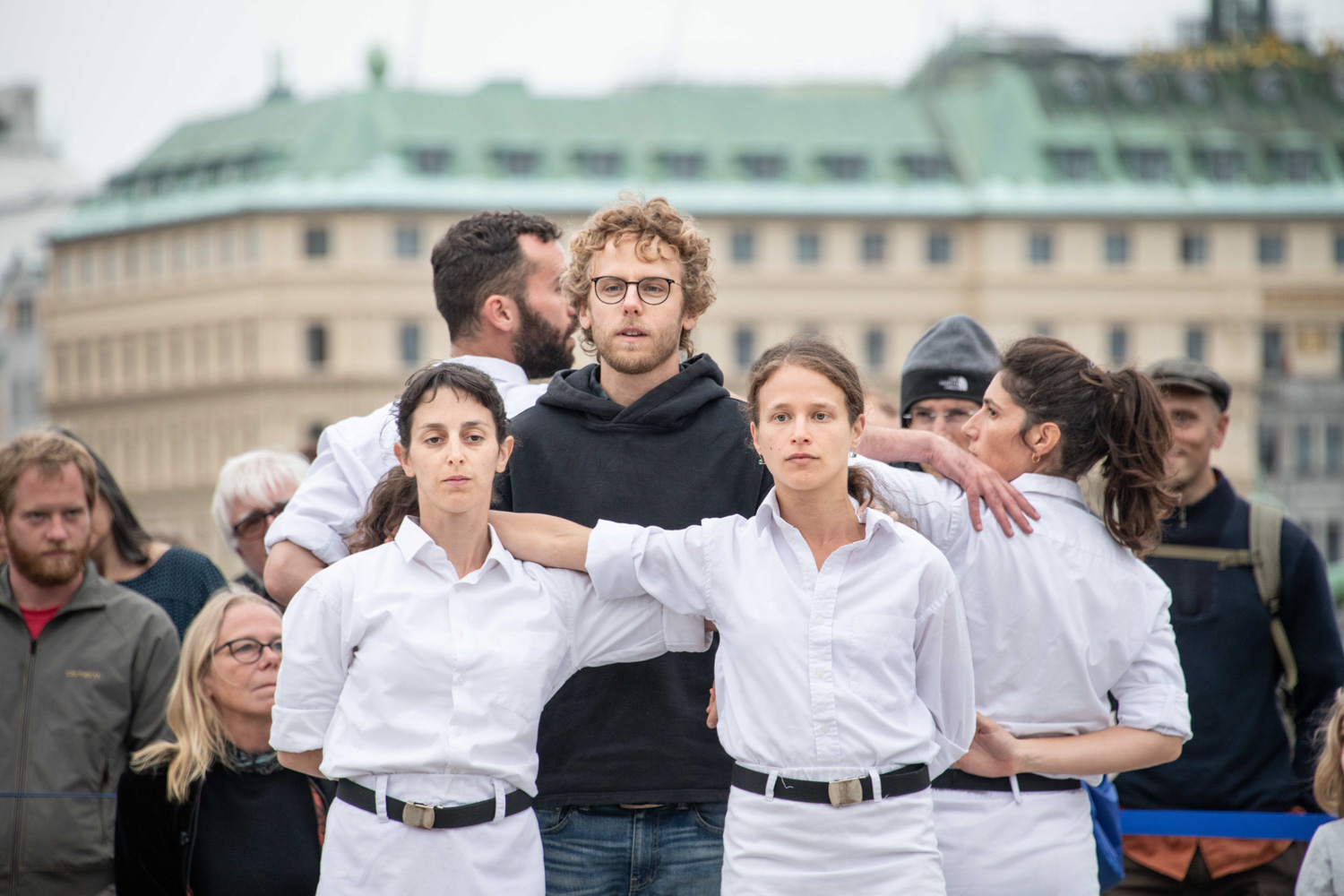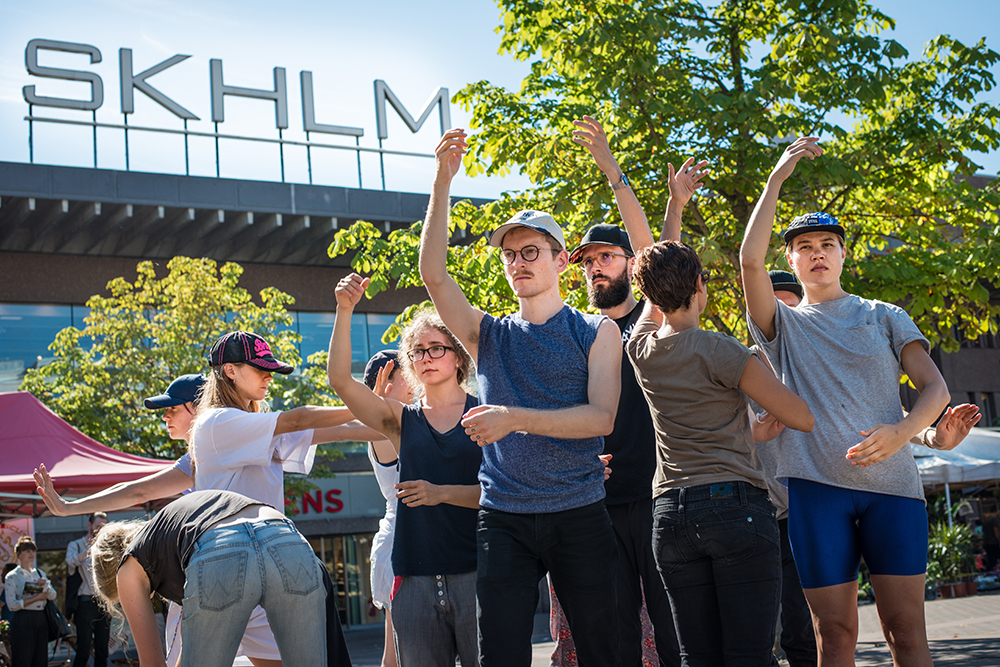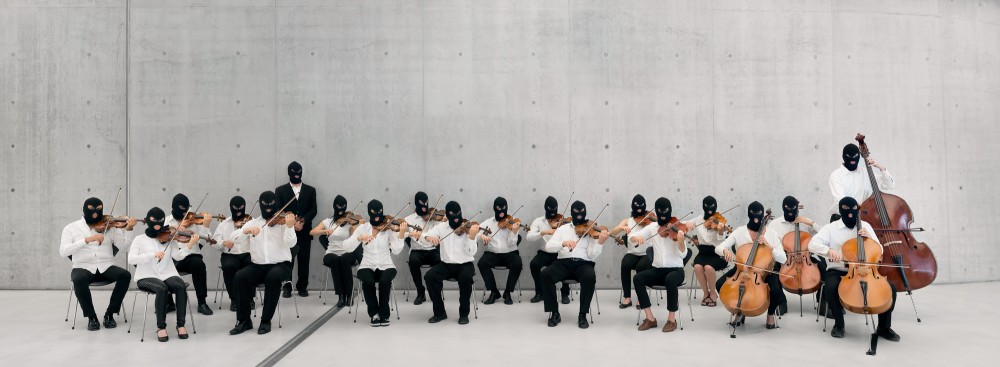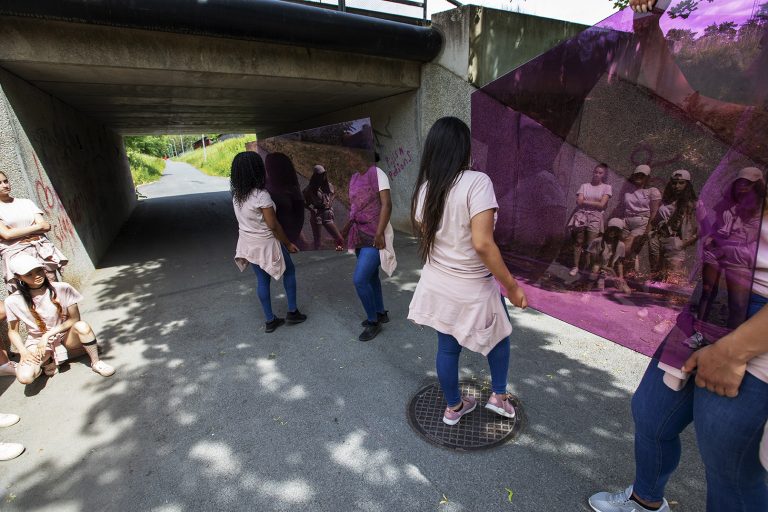Temporary art is art of a limited duration with a temporary site, function or audience. It may, for example, be an art event, an exhibition in urban space or a sculpture with a temporary location (often called semi-permanent art). As a result, temporary public art can encounter new audiences and invite the public to an active and co-creative participation in other ways than permanent art can.

Creating Contexts
The work process for temporary art is in many ways different from that of permanent, building-related art and art in urban development. Simply put, permanent art is always conceived in relation to a context – a building, a site, a social situation, a vision of the future – that already exists. While working with temporary art, the curatorial/artistic idea is directly related to a specific issue, or a specific area that has been chosen because it would be particularly interesting to explore it from an artistic point of view. For this reason, artists and curators/art project managers who work with temporary art projects have a greater possibility to focus their entire concentration on the artistic aspects and are thus able, in a more open and freer way, to test new working methods. This can contribute to developing the scope of public art and to new ways of introducing contemporary art to the public. Put differently, working with temporary art contributes actively to fulfilling the cultural policy objectives of ensuring that art experiences, quality and artistic innovation are available to all, and to promoting international and inter-cultural exchange.
Focus on the Particular
Working with temporary projects is intimately dependent on the specific issues to be explored and their context. This makes it difficult to describe its work process in general terms, as it varies greatly from project to project. The only common denominator in the work process of temporary art projects is, in very basic terms, that the process has a beginning, a middle and an end. The project begins with an initial conceptual phase, followed by an in-depth research and planning phase and ends with a concluding phase in which the artwork is produced. All the phases require time, trust, an open mind and a welcoming attitude to the unexpected, which will lead to further improvements and a good result.
Things to Think About While Working with Temporary Art
- Make a clear plan including sufficient time for each phase
- Trust the artist and their creative process
- Keep the discussion going throughout the process
- Work flexibly and be open to change
- Identify required collaborations
- Apply, in time, for all necessary licences and permits
- Invite the artist to the presentation of the artwork
- Plan, from the outset, how to communicate the project
Public Art Agency Sweden’s Process for Temporary Art
At Public Art Agency Sweden, the point of departure for working with temporary projects is either an artist’s practice or a specific, curatorial theme. The process begins with a research phase in which the curator/art project manager and the artist explore a particular issue. The research phase is followed by the concept phase in which the project’s concept is devised, tested and developed. This is followed by the development of a production plan, in close dialogue between the curator/art project manager and the artist. When it has been approved, the production begins.
Dialogue in Focus
During the production phase, everyone is aware that a lot can happen on the way, and that the artistic proposals may have to be developed and changed depending on the possibilities and unexpected challenges that arise. For this reason, the artist works in close dialogue with the curator/art project manager throughout the process from concept to completed work. Proposals and design ideas are constantly presented and developed and important junctures are discussed with all collaborative partners involved in the process.
There are also discussions on where and how the art may be displayed, which types of public group the artist and curator/art project manager are looking to reach, how the public can best be informed about the art project, whether programmes and artist talks should be arranged in conjunction with the presentation of the work, and what additional information is necessary and how best to disseminate it, which land leasing contract and other permissions or licences are required for presenting the work, etc.
A New Role for the Public – And a New Audience
Public art is normally produced in accordance with physical requirements in terms of materials or long-term sustainability, but when art is not required to be physically permanent artists are provided with the opportunity to work in different ways. It can also mean a new role for the public as active co-creators and participants in the artistic process. That is why temporary art, in different ways than permanent art, can contribute to unexpected encounters and opportunities for critical reflection, individually or in groups, in everyday life. In this way, temporary art has a specific value as it is able to operate independently, just as it is, in our shared spaces. The new working methods that are the result of temporary art can prompt urban development projects and permanent, artistic interventions.
And the Practical Side…
Working with temporary art projects requires a process of time and trust. Flexibility and space for projects to grow are also key factors. This applies regardless of whether the projects have been initiated by an organisation, an artist or any other type of art practitioner. Time is needed to make all the necessary preparations before the art is installed or takes place. Temporary artworks require access to a site where they will exist for a period of time. Sometimes the works require the installation of electricity or water. Perhaps they have to be closed during nighttime, to eliminate the risk of being vandalised or causing injury. In the case of a performance work, the artist may need access to a space where the participants can change and rest. Permission from the police or an insurance policy may be required. A great challenge is the development and establishment of a communication process, internally as well as externally, to provide the art with the possibility to reach its audience.
Setting out from Artist-Driven Initiatives
The practical challenges for temporary art can prove a great strain on artist-driven initiatives. It is much easier for a private or public property owner with full right of access than for an individual artist to solve bureaucratic or technical difficulties and also, frequently, with far less expense. Here, public institutions and private actors can take an active role in supporting the work of artists. That the possibilities to work professionally as an artist have to be improved in all parts of the country, was one of the most important conclusions of a 2018 public inquiry (SOU 2018:23).


